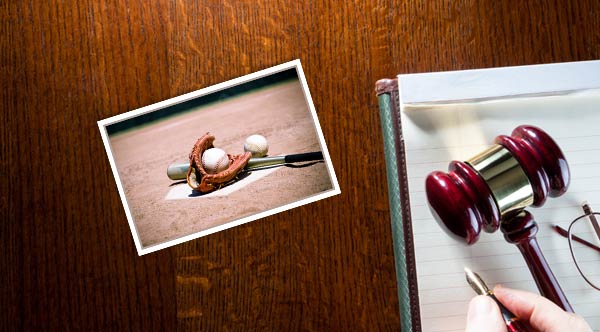
Protect Your Agency from Liability Claims(This issue of Pulse E-news is dedicated to liability risk management. Each article addresses a different best practice for PDRMA members to follow to protect their agencies against liability claims.)
Skateboarding, swimming, ice-skating — PDRMA members offer a wide range of activities to patrons and strive to make them as safe as reasonably possible. But accidents still happen, and so do personal injury lawsuits.
The Illinois’ Tort Immunity Act’s express purpose is “to protect local public entities and public employees from liability arising from the operation of government” and provides invaluable statutory defenses and immunities to PDRMA members. While the act provides protection, it’s still the members’ responsibility to maximize safety and minimize liability risk with advance planning and proactive risk management. Doing so minimizes injuries and positions your agency for a successful defense in the event of an injury — before an accident occurs.
By comparing a personal injury lawsuit to the game of baseball, we can better understand how a lawsuit progresses:
- To get to first base, the plaintiff must establish that the defendant (the park district) owed a recognized legal duty to the injured party (the plaintiff) — such as to maintain property in safe condition, to supervise, to provide certain equipment, etc.
- To advance to second base, there must be a breach of that duty.
- To make it to third base, the plaintiff must prove he sustained damages such as personal injury, medical bills, lost income, damaged property, etc.
- And to reach home plate and score (get the money), the plaintiff must prove the breach of duty was the “proximate cause” of those damages.
At any stage in the litigation process, statutory immunity may be available under the Tort Immunity Act, which would end the litigation at that point — game over, member wins! Your proactive risk management measures provide the necessary offense to assert such statutory immunities successfully.
 First Base First Base
“The plaintiff is eyeing first base but can’t get there unless he establishes that your agency has a recognized legal duty to maintain a facility, supervise the use of a facility, provide adequate equipment, etc.,” says Steve Kleinman, PDRMA General Counsel.
For example, the Tort Immunity Act protects a park district and its employees against liability for an injury caused by failure to provide supervision and provides absolute and unconditional immunity for failing to supervise public property, unless the public entity is required to provide supervision based on common law, statute, ordinance, code or regulation. When supervision is provided (whether voluntarily or mandated by law), the absolute immunity becomes limited immunity (the liability will be for “willful and wanton” conduct).
However, the decision to voluntarily provide supervision in and of itself demonstrates a conscious regard and deference for the safety of others. Often, voluntarily providing supervision is the best practices approach (like an “intentional walk” in baseball); it has a strategic purpose. Use sound judgment in determining whether to provide supervision voluntarily. In many programs and activities, it’s appropriate and prudent to provide supervision, such as for tumbling and gymnastics programs or open gym. In other activities, it may be less effective or appropriate (skate parks, sled hills, open parks, playgrounds). When in doubt, talk to your PDRMA Risk Management Consultant.
 Second Base Second Base
To establish breach of duty, the plaintiff must next prove there was “willful and wanton” conduct on the part of your agency or employee. “The Tort Immunity Act defines ‘willful and wanton’ in two ways,” Kleinman says. “It can either be something done with a deliberate intention to cause harm or something done (or not done) that shows total indifference to, or conscious disregard for, the safety of people or property."
If the plaintiff can prove willful and wanton conduct, he reaches second base by establishing breach of duty. However, if your agency’s proactive risk management demonstrates a conscious regard for the safety of others, you may be able to tag out the plaintiff before he gets to second. Examples of such proactive risk management include signage and posted rules/regulations, verbal/written warnings, inspections and maintenance systems.
 Third Base Third Base
Assuming the plaintiff establishes legal duty and breach of duty, he then must prove he sustained damages as a result of those actions. The damage may be physical injuries, loss of work time and income or other types of damage stemming from the incident.
Reaching Home Plate
“Let’s assume the plaintiff is now on third base and is eyeing home plate,” Kleinman continues. “Can he get there? Yes, but first he must show the agency’s breach of duty is closely enough related to his injury that the breach should be considered the cause of his injury.” However, there may still be an applicable and available statutory immunity that will tag out the plaintiff as he is sliding into home plate.
Managing Liability Risk
How do you best manage your agency’s liability risk?
- Signage — Post appropriate signage for playgrounds, parks, pools, facilities and recreation areas. Identify intended and permitted use, post rules and regulations, note if no supervision is provided or if parents are responsible for supervision, and consider the value of illustrations (a picture is worth a thousand words) and/or having signage in another language, such as Spanish.
- Ordinances — Your agency can establish ordinances governing the use of facilities and grounds. From hours of operation to when/where/if you allow certain activities, ordinances establish whether a patron is an “intended and permitted” user. However, if not well communicated, the ordinance may have no practical value nor serve as an effective defense in litigation. Post key ordinances at relevant sites, highlight them in promotional materials such as seasonal brochures, post them on your agency’s website, and link to them on social media.
- Inspections/Maintenance — In real estate, it’s location, location, location. In litigation, it’s documentation, documentation, documentation. Inspection and maintenance records are critical to establish your agency’s commitment to patron safety — and in establishing you were not willful and wanton. PDRMA can use written records of regular inspections and maintenance to tag a plaintiff out at second base by demonstrating your agency’s conscious regard and deference to the safety of others.
“Managing your liability risk through proactive risk management," adds Kleinman, "can help ensure a plaintiff doesn’t steal a base, score a run, take the game into extra innings, or win the game.” |

